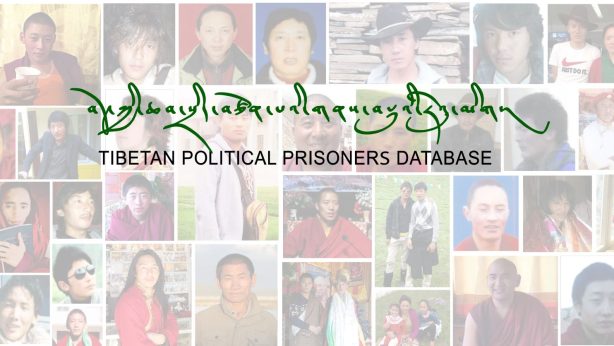TCHRD Statement on Human Rights Day, the 67th Anniversary of Universal Declaration of Human Rights
Today is the 67th anniversary of the Universal Declaration of Human Rights (UDHR), adopted by the United Nations in 1948. In 1950, two years after the adoption of the UDHR, the UN General Assembly invited all member states and interested parties to observe 10 December as Human Rights Day.
The UN has devoted this year’s theme on Human Rights Day to the two key human rights covenants, the International Covenant on Civil and Political Rights (ICCPR) and the International Covenant on Economic, Social and Cultural Rights (ICESCR), that embody the spirit and intent of the UDHR. The UN General Assembly adopted both these covenants in 1966. The UDHR, the ICCPR and the ICESCR are known collectively as International Bill of Human Rights.
This year’s theme, “Our Rights, Our Freedoms, Always”, reinforces the importance of promoting and protecting basic rights and fundamental freedoms enshrined in the covenants such as “freedom of speech, freedom of worship, freedom from want, and freedom from fear”.
In celebration of the UN’s adoption of the ICCPR and ICESCR, and its 50th anniversary in 2016, the Tibetan Centre for Human Rights and Democracy (TCHRD) will release and distribute two new and revised publications in Tibetan language: a handbook for human rights defenders and a Tibetan translation of ICCPR and ICESCR.
Twenty days ago, on 20 November 2015, was the 70th Anniversary of the opening of the Nuremberg Tribunal (also known as the International Military Tribunal). The Nuremberg Tribunal and the Tokyo Tribunal (also known as the International Military Tribunal for the Far East), which opened in April 1946, were the first steps following the end of World War II to hold individuals accountable for violating international law. The UN, the international military tribunals, and the UDHR articulated international human rights and set a precedent for their enforcement.
The legacy of the Nuremberg Tribunal is long lasting. The five ad hoc international criminal tribunals (the International Criminal Tribunal for Yugoslavia, the International Criminal Tribunal for Rwanda, the Special Court for Sierra Leone, the Extraordinary Court in the Chambers of Cambodia, and the International Lebanon Tribunal), the International Criminal Court, the trial of former Chadian dictator HisseneHambe in the Extraordinary African Chambers, the removal of amnesty and prosecution of generals in Latin America, and the Spanish arrest warrants for Hu Jintao and others for genocide in Tibet all draw on the precedent established by the Nuremberg Tribunal.
At the Nuremberg Tribunal the prosecution primarily relied on official documents instead of witness testimony to prove responsibility for international crimes. The Nazi documents showed a clear and systematic policy to commit international crimes. Modern tribunals have relied more on witness testimony. Accounts from victims, soldiers, and other insiders connect the people most responsible to the crimes they committed. In some cases, the emphasis on witness testimony was necessary because some perpetrators of international crimes kept few or undetailed records in an attempt to hide their responsibility.
In Tibet the Chinese government officials and members of the Chinese Communist Party are responsible for crimes against humanity. Evidence from victims and family members describing torture, enforced disappearances and murder are common. But witness testimony connecting these crimes to the specific local and government officials most responsible is rare. Instead, the responsibility of government officials can be proven primarily through official documents.
Since 2013, the Tibetan Centre for Human Rights and Democracy has obtained five official documents from Tibet. These documents show a clear and systematic policy to commit human rights violations and crimes against humanity in Tibet. Some of the documents, like the manual on how members of the People’s Armed Police can avoid the psychological trauma of shooting unarmed protesters, directly connect the crimes committed by security personnel to the Chinese leadership, including Hu Jintao. Other documents, such as autopsy reports from 2008, show that Chinese officials knew that machine guns and lethal force was used against protesters. Other documents are official Chinese laws that impose collective punishments on entire families and communities if there is a self-immolation protest or somebody travels without permission. Other laws explicitly require unlawful restrictions on protected human rights. The most recent document obtained by TCHRD shows the official policies in Diru (Ch: Biru) County in Nagchu (Ch: Naqu) Prefecture, Tibet Autonomous Region (TAR), in Kham province to purge and reform religious institutions. This document not only confirms reports from sources in Tibet but also connects responsibility for human rights violations to the government officials responsible for adopting and implementing the regulations.
Together these documents show that senior members of the Chinese government are responsible for crimes against humanity and systematic human rights abuse in Tibet. The documents connect the human rights violations in Tibet to the Chinese authorities most responsible for their commission. The lasting legacy of the Nuremburg Tribunal was to create a system that removed impunity for international crimes.
It is our hope and conviction that one day Tibetans will be able to enjoy the same rights and freedoms as everyone in the human family. For these rights and freedoms to become a reality, it is imperative that absolute impunity enjoyed by human rights violators is ended.
Click here to access the full text of the Tibetan handbook for human rights defenders



